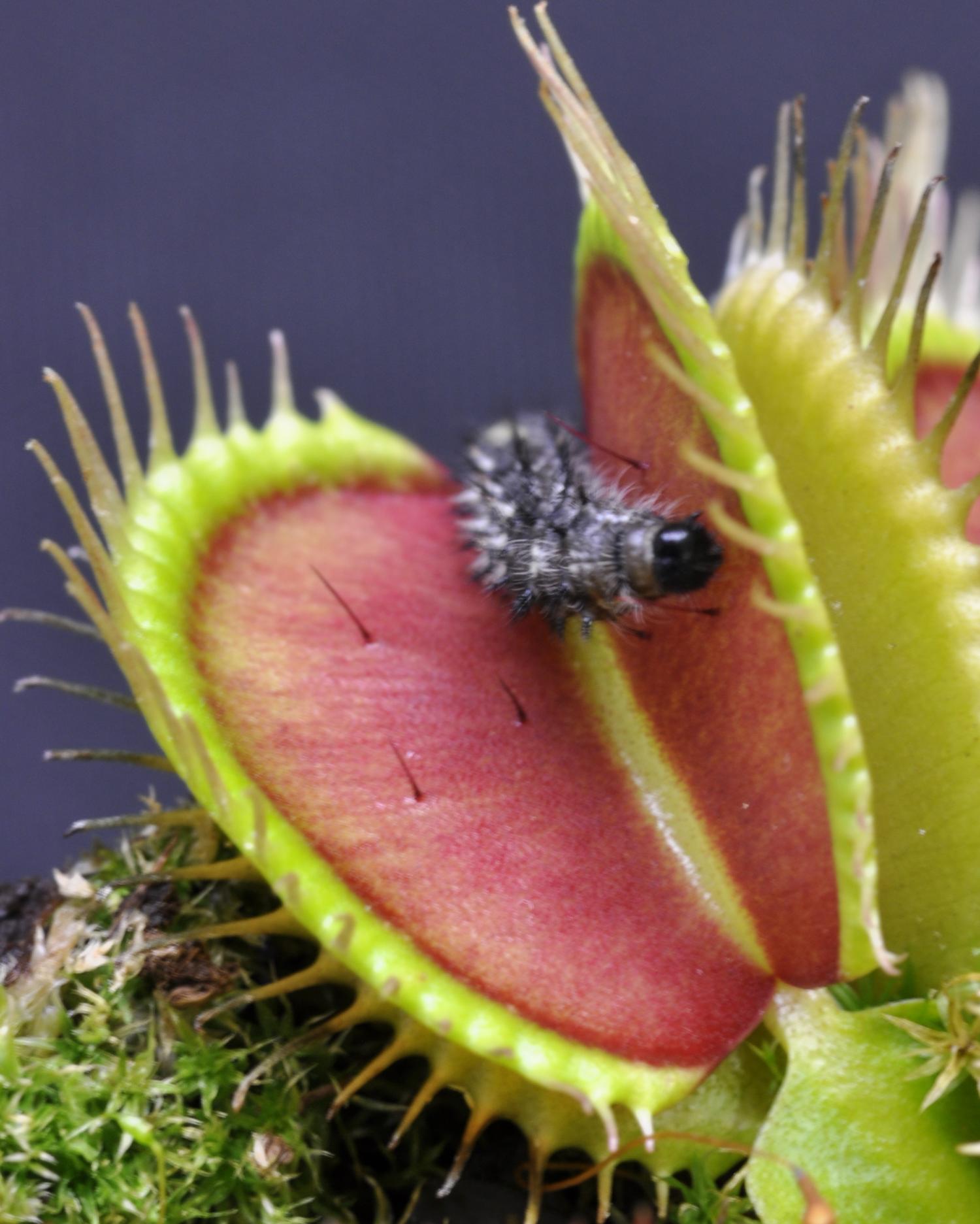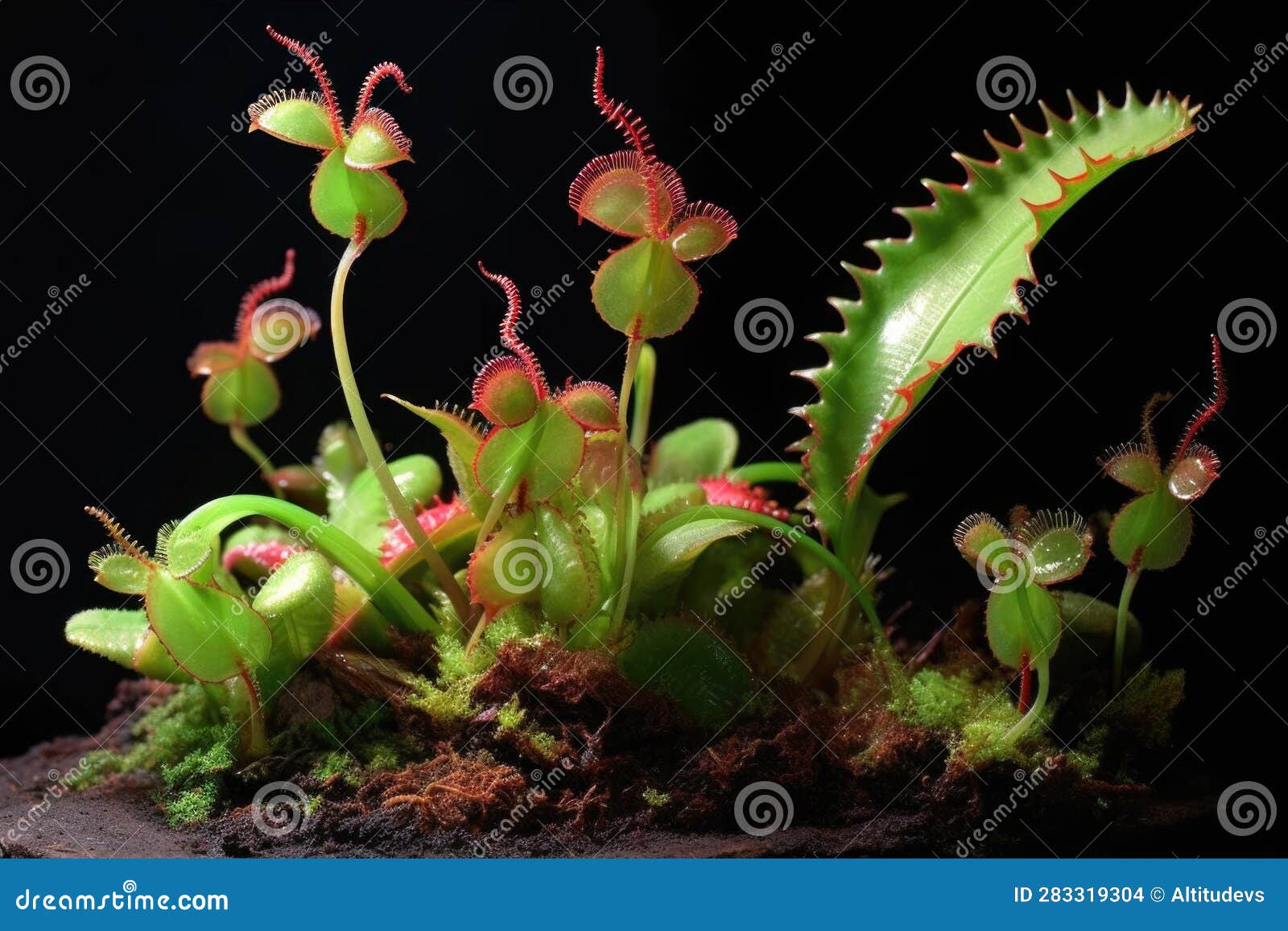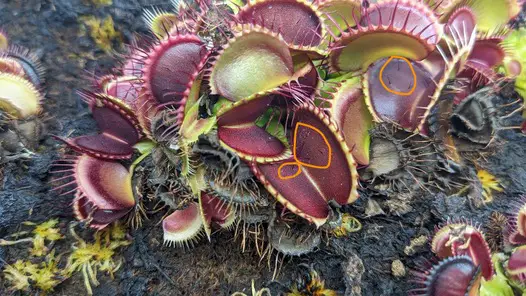What Makes the Venus Flytrap a Unique Predator?
The Venus flytrap (Dionaea muscipula) is a carnivorous plant that has evolved to obtain essential nutrients in nutrient-poor soil. Native to the bogs and savannas of North and South Carolina, this plant has developed a unique mechanism to capture and digest insects, which provides it with the necessary nutrients to thrive. The Venus flytrap’s ability to digest insects is a fascinating process that has captivated scientists and plant enthusiasts alike. But have you ever wondered how does a Venus flytrap digest its prey? To understand this process, it’s essential to explore the plant’s unique characteristics and adaptations.
The Venus flytrap’s leaves are modified to form a trap that can snap shut in as little as 0.1 seconds, capturing unsuspecting insects. This rapid closure is made possible by the plant’s unique trigger mechanism, which involves the bending of trigger hairs that line the leaves. When an insect lands on the leaf and touches two or more of these trigger hairs, the leaf snaps shut, trapping the insect inside. The plant then produces digestive enzymes to break down the insect’s soft tissues and exoskeleton, releasing essential nutrients that the plant can absorb.
This unique digestive process allows the Venus flytrap to obtain the necessary nutrients to survive in environments where the soil lacks essential nutrients. The plant’s ability to digest insects also provides it with a competitive advantage over other plants that rely solely on soil nutrients. By understanding how the Venus flytrap digests its prey, we can gain a deeper appreciation for the intricate relationships between plants and their environments.
How Does the Venus Flytrap Capture Its Prey?
The Venus flytrap’s leaves are modified to form a trap that can snap shut in as little as 0.1 seconds, capturing unsuspecting insects. This rapid closure is made possible by the plant’s unique trigger mechanism, which involves the bending of trigger hairs that line the leaves. The trigger hairs are extremely sensitive and can detect even the slightest movement, allowing the plant to capture prey quickly and efficiently.
When an insect lands on the leaf and touches two or more of the trigger hairs, the leaf snaps shut, trapping the insect inside. The speed of the trap’s closure is due to the rapid movement of the leaf’s lobes, which are hinged at the base of the leaf. This hinge allows the lobes to move quickly and snap shut, creating a tight seal that prevents the insect from escaping.
The trigger mechanism of the Venus flytrap is a remarkable example of evolutionary adaptation, allowing the plant to capture prey in a nutrient-poor environment. By understanding how the Venus flytrap captures its prey, we can gain insight into the intricate relationships between plants and their environments, and how plants have evolved to obtain the necessary nutrients to survive.
The Venus flytrap’s ability to capture prey is also closely tied to its digestive process. Once the insect is trapped, the plant produces digestive enzymes to break down the insect’s soft tissues and exoskeleton, releasing essential nutrients that the plant can absorb. This process is crucial for the plant’s survival, and is a key aspect of how does a Venus flytrap digest its prey.
The Digestive Process: Breaking Down Insect Prey
Once the Venus flytrap has captured an insect, it begins the digestive process to break down the insect’s soft tissues and exoskeleton. This process is crucial for the plant’s survival, as it allows the Venus flytrap to obtain the necessary nutrients to thrive in nutrient-poor environments. So, how does a Venus flytrap digest its prey?
The digestive process begins with the production of digestive enzymes, which are secreted by the plant’s leaves. These enzymes, including proteases, lipases, and amylases, break down the insect’s proteins, fats, and carbohydrates into smaller molecules that can be absorbed by the plant. The enzymes are highly specialized and are able to break down the tough exoskeleton of the insect, allowing the plant to access the nutrient-rich soft tissues.
The digestive process is a complex and highly regulated process, involving the coordinated action of multiple enzymes and other molecules. The plant’s leaves are able to detect the presence of nutrients and adjust the production of digestive enzymes accordingly, ensuring that the plant is able to obtain the maximum amount of nutrients from its prey.
The breakdown of insect prey is a critical component of the Venus flytrap’s digestive process, and is essential for the plant’s survival. By understanding how the Venus flytrap digests its prey, we can gain insight into the intricate relationships between plants and their environments, and how plants have evolved to obtain the necessary nutrients to survive.
How to Feed Your Venus Flytrap: Tips and Precautions
Feeding your Venus flytrap can be a fun and rewarding experience, but it’s essential to do it correctly to ensure the plant’s health and well-being. So, how does a Venus flytrap digest its prey, and what types of insects should you feed it?
When it comes to feeding your Venus flytrap, it’s best to use live insects that are small enough to fit inside the plant’s leaves. Flies, spiders, and ants are all good options, but avoid feeding your plant anything too large, as this can cause damage to the leaves. It’s also important to note that Venus flytraps do not require a diet of live insects, and can thrive on a diet of dead insects or even commercial insect food.
When feeding your Venus flytrap, make sure to use insects that are free of pesticides and other chemicals, as these can harm the plant. It’s also essential to avoid overfeeding your plant, as this can cause the leaves to become too full and lead to rot and other problems. A good rule of thumb is to feed your Venus flytrap one or two insects per month, depending on the size of the plant and the availability of nutrients in the soil.
In addition to feeding your Venus flytrap the right types of insects, it’s also important to provide the plant with the right environment. Make sure the soil is moist but not waterlogged, and provide the plant with plenty of indirect sunlight. With the right care and feeding, your Venus flytrap can thrive and provide you with a unique and fascinating glimpse into the world of carnivorous plants.
The Role of Digestive Enzymes in the Venus Flytrap’s Diet
The Venus flytrap’s digestive process is made possible by the production of digestive enzymes, which break down the insect’s soft tissues and exoskeleton. These enzymes, including proteases, lipases, and amylases, are highly specialized and play a crucial role in the plant’s ability to obtain essential nutrients from its prey.
Proteases, for example, break down proteins into smaller peptides and amino acids, which are then absorbed by the plant. Lipases, on the other hand, break down fats and oils into fatty acids and glycerol, which are also absorbed by the plant. Amylases, meanwhile, break down carbohydrates into simple sugars, which are then used by the plant for energy and growth.
The production of digestive enzymes is a complex process that involves the coordinated action of multiple genes and enzymes. The Venus flytrap’s digestive system is highly efficient, allowing the plant to extract nutrients from its prey quickly and effectively. This is essential for the plant’s survival, as it allows the Venus flytrap to thrive in nutrient-poor environments.
Understanding the role of digestive enzymes in the Venus flytrap’s diet is essential for answering the question of how does a Venus flytrap digest its prey. By examining the plant’s digestive process and the enzymes involved, we can gain a deeper appreciation for the intricate relationships between plants and their environments, and how plants have evolved to obtain the necessary nutrients to survive.
What Happens to the Nutrients After Digestion?
After the Venus flytrap has digested its insect prey, the nutrients obtained from the digestion process are absorbed and utilized by the plant. The plant’s leaves and roots play a crucial role in this process, as they are responsible for absorbing and storing the nutrients.
The Venus flytrap’s leaves are able to absorb the nutrients from the digested insects through a process called diffusion. This process allows the plant to take in the nutrients it needs to survive, including nitrogen, phosphorus, and potassium. The leaves also store some of the nutrients, allowing the plant to use them as needed.
The plant’s roots also play a role in nutrient uptake and storage. The roots are able to absorb nutrients from the soil, which are then transported to the rest of the plant. This process is especially important for the Venus flytrap, as it allows the plant to obtain the nutrients it needs to thrive in nutrient-poor environments.
Understanding how the Venus flytrap absorbs and utilizes nutrients is essential for answering the question of how does a Venus flytrap digest its prey. By examining the plant’s nutrient uptake and storage processes, we can gain a deeper appreciation for the intricate relationships between plants and their environments, and how plants have evolved to obtain the necessary nutrients to survive.
The Venus flytrap’s ability to absorb and utilize nutrients from its insect prey is a fascinating example of the plant’s adaptability and resilience. By studying this process, we can gain a better understanding of the complex relationships between plants and their environments, and how plants have evolved to thrive in a wide range of conditions.
Common Misconceptions About Venus Flytrap Digestion
Despite the Venus flytrap’s fascinating digestive process, there are several common misconceptions about how this plant obtains its nutrients. One of the most common myths is that the Venus flytrap can digest anything, including rocks, sticks, and even small animals. However, this is not the case. The Venus flytrap’s digestive system is specifically designed to break down insect exoskeletons and soft tissues, and it is not capable of digesting other types of materials.
Another common misconception is that the Venus flytrap requires a diet of live insects in order to survive. While it is true that the Venus flytrap can capture and digest live insects, it is not necessary to feed it live prey. In fact, the Venus flytrap can thrive on a diet of dead insects or even commercial insect food.
It’s also worth noting that the Venus flytrap’s digestive process is often misunderstood. Some people believe that the plant’s digestive enzymes are capable of breaking down anything, including plastic or metal. However, this is not the case. The Venus flytrap’s digestive enzymes are highly specialized and are only capable of breaking down specific types of materials, such as insect exoskeletons and soft tissues.
By understanding the common misconceptions about Venus flytrap digestion, we can gain a better appreciation for the intricate relationships between plants and their environments, and how plants have evolved to obtain the necessary nutrients to survive. So, how does a Venus flytrap digest its prey? The answer lies in the plant’s unique digestive system, which is specifically designed to break down insect exoskeletons and soft tissues.
Conclusion: Unraveling the Mysteries of Venus Flytrap Digestion
In conclusion, the Venus flytrap’s digestive process is a fascinating and complex mechanism that allows the plant to obtain essential nutrients in nutrient-poor environments. By understanding how the Venus flytrap captures and digests its prey, we can gain a deeper appreciation for the intricate relationships between plants and their environments, and how plants have evolved to obtain the necessary nutrients to survive.
So, how does a Venus flytrap digest its prey? The answer lies in the plant’s unique digestive system, which involves the production of digestive enzymes, the breakdown of insect exoskeletons and soft tissues, and the absorption and utilization of nutrients. By examining the Venus flytrap’s digestive process, we can gain a better understanding of the complex relationships between plants and their environments, and how plants have evolved to thrive in a wide range of conditions.
The Venus flytrap’s digestive process is a remarkable example of the plant’s adaptability and resilience, and it highlights the fascinating diversity of plant life on our planet. By studying the Venus flytrap and other carnivorous plants, we can gain a deeper appreciation for the natural world and the incredible complexity of plant biology.








